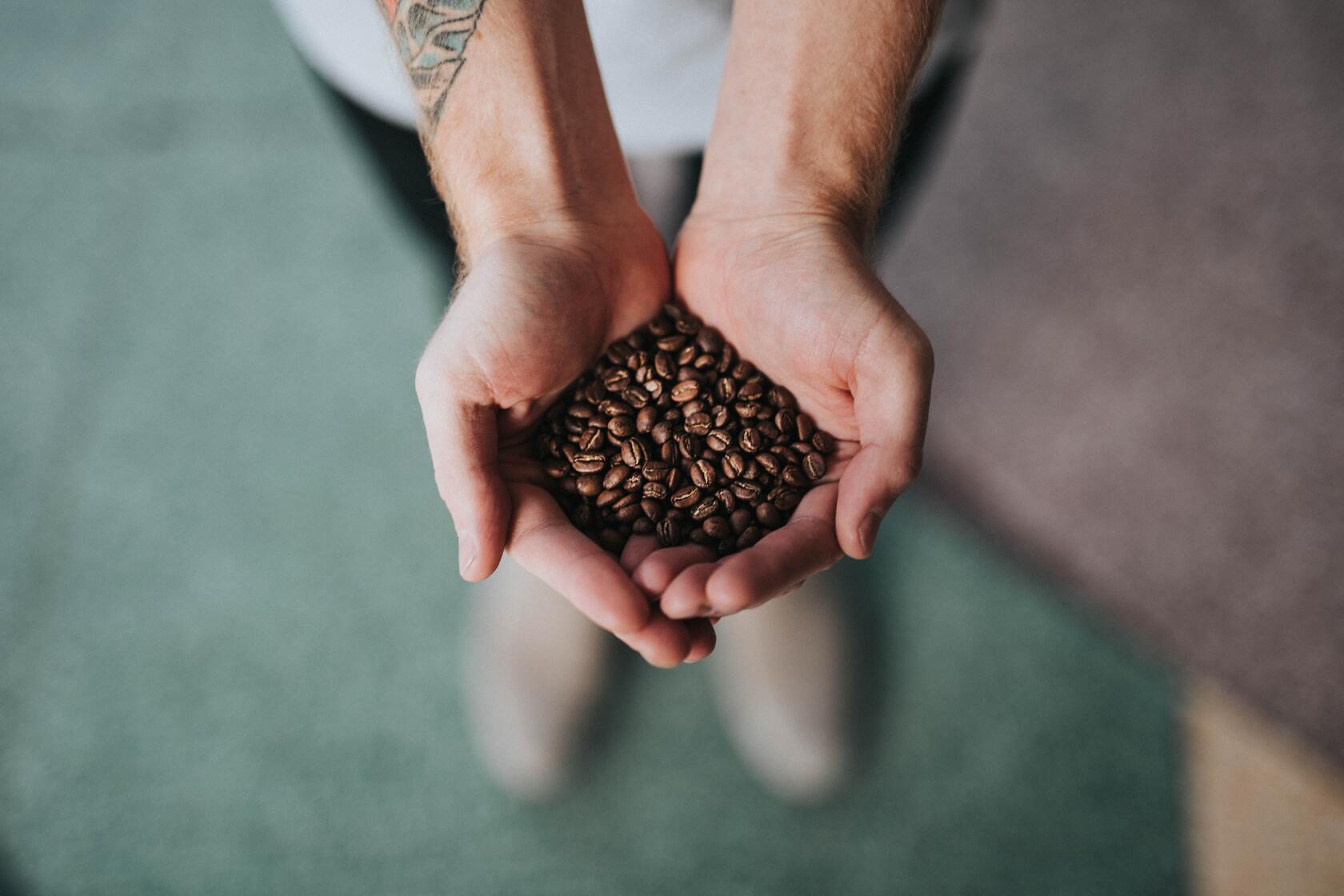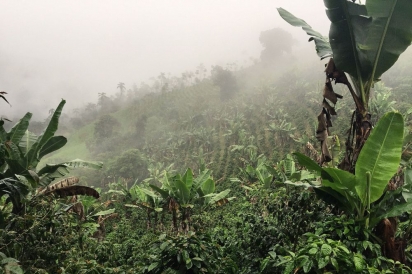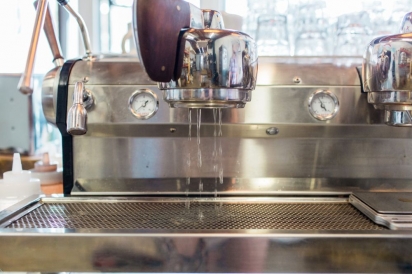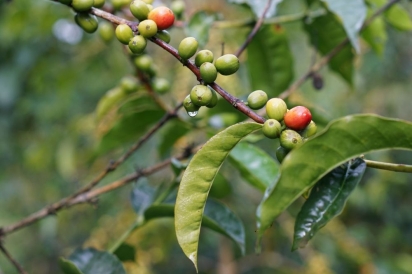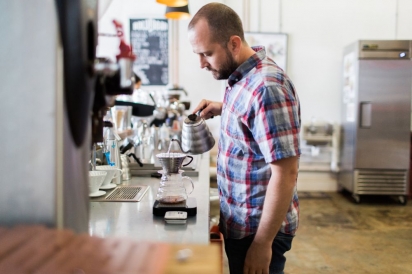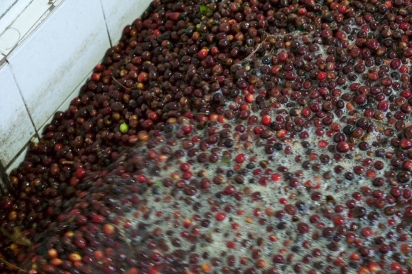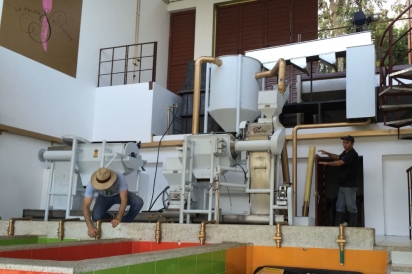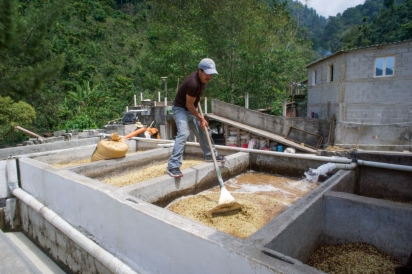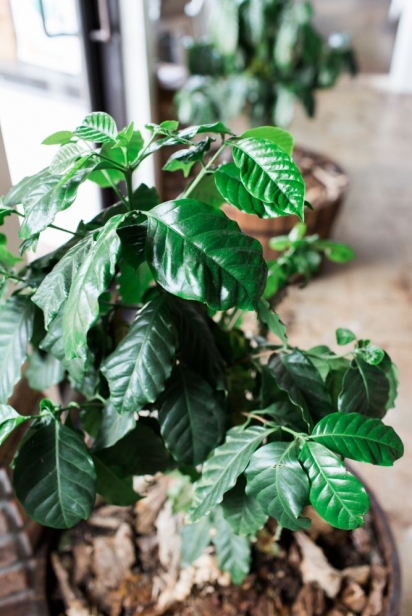Just Add Water
Mist moves through the valleys and envelops the steep hills full of bushy, green coffee shrubs. Standing here, it feels as if the earth is breathing. Semi-distant thunder echoes off the mountainsides around us and the incessant call of tropical birds, reptiles and insects fills the silence between the rumbling. As we walk carefully down a steep path of mud, the humidity weighs heavy on us, accumulating as water droplets in our hair and on our skin. Suddenly, rain starts to pour and washes away any remaining dust of our travels.
More than anything else, great coffee depends on water. Most coffee drinkers know water makes up at least 98% of a cup of coffee but less known is the role water plays in the production of coffee on a farm. Water is essential to the growth and processing of coffee and it serves a critical function in development of flavor in the coffee seed. To understand more about the importance of water before those beans get to your local coffee shop, it is necessary to travel outside our region, to the source of the beans.
In our quest to source the best beans for Northeast Florida coffee shops, we are on Finca La Merced, six hectares in the western range of the Ecuadorian Andes a couple hours northwest of Quito. It’s the rainy season, and we are here meeting with Fernando Alarcon to learn about his methods, see his soil and plants and discuss his plans for the future of his coffee and his farm.
The microclimate surrounding the farm is humid and misty with nearly 70 inches of rain annually, warm-ish days and cool nights. The dark green leaves on the bushy, head-high coffee shrubs are waxy and lush and the green but maturing coffee bean cherries are plump and evenly ripening in the wet environment.
Fernando’s trees are healthy because he maintains them well and they grow in a balanced ecosystem. Much of this balance is tied directly to water, mainly in the form of rain. Rain dictates the growth cycle of plants and crops in the tropics. The success of coffee growing is directly tied not only to the amount of rain the farms receive each season but also to the timing of the rain.
Irrigation is not something the vast majority of coffee farmers install, so most farmers are completely dependent on weather patterns and they have developed techniques to help their coffee stay healthy even during dry seasons or years. Terracing is a practice found on many coffee farms because shaping the land into terraces helps keep the water, soil nutrients and fertilizers at the root bed of the shrubs. Also, most coffee farms are on steep mountainsides so shrubs grown on un-terraced land don’t get the chance to absorb nutrients during heavy rains. The soil simply washes away from the plant. Farmers have to be wise when terracing their land. Shaping a terrace incorrectly can allow too much water to pool at the plant, increasing the chances of disease, pests and root rot.
Around us, the first rain of the wet season beats down on the rich volcanic soils of the coffee lands, and the surrounding hills spring to life. Buds form on the coffee shrubs and soon bloom. The delicate white flowers appear almost as an explosion. The jasmine-like scent of coffee blossoms permeates the farms and moves with the wind into small towns that support these coffee regions. The coffee bloom is an important time of year for producers because the strength of the bloom will indicate the yield of the harvest. Every flower, if left undisturbed, should turn into a cherry.
As quickly as the flowers appear, they’re gone. The rain continues, the plants grow and the coffee cherries swell. During this time, the root systems of the plants are absorbing water from the soil and driving any nutrients, acids and enzymes through the plants and into the fruit. As in wine, the unique soil composition on a farm is a determining factor in the flavor you taste in a cup of coffee. This is commonly referred to as terroir, the way in which a particular region’s climate, soil and terrain affect the flavor of an organic product. Since the seasonal rains in the tropics dictate climate and help shape terrain, and since water is responsible for moving components of the soil throughout the plant and into the fruit, water plays a huge role in defining terroir characteristics in coffee
As the months pass, the rains finally cease and temperatures rise. During this time, coffee shrubs drive much of their stored energy and nutrients to the cherries. Nine months after the bloom, coffee cherries are beautifully ripe, juicy and sweet, ready to be harvested. This whole cycle is dictated by the seasonal rains. Thanks to the role that water plays in transporting nutrients, acids and enzymes throughout the plants, we get a truly great cup of coffee. But it’s not just in the growing of coffee that water is important.
Water also plays a significant role in processing the sweet cherries into the seeds that we roast. Proper processing of coffee has an enormous effect on the flavor of coffee in the cup. And this brings us next to Guatemala.
We are at the wet mill of one of our producer partners Alberto Reyes Aguliar (“Don Beto”) to see the day’s harvest. Finca San Patricio el Limón sits 5,000 feet above sea level just outside the tiny agricultural town of Palencia, Guatemala. It’s dark outside and the temperature is dropping. Slowly, well-worn pickup trucks, with bumping cumbia music on small speakers and hundred-pound repurposed corn and rice sacks full of sticky, shimmering, ripe coffee cherries, begin arriving one after another. As the trucks pull up to the mill, the sacks are unloaded by hand, one by one, and weighed. The bags are untied and the red and yellow cherries are emptied into a tile-lined cement tank at the top of the mill.
Big as a small swimming pool, the tank is filled two-thirds of the way with coffee cherries before the water spout is opened. The sweet smell of coffee pulp fills the air. The engine for the depulper fires and the chatter of farmers, nighttime birds, reptiles and insects is replaced by the drone of combustion. The cherries begin to flow out of the tank and into the processing system.
From the loading tank, water directs the cherries into a floating tank where the ripe coffee will sink and go to the depulper. Under- or overripe coffee will float, to be separated and sold on the domestic market while the best is exported. The depulper delicately squeezes the coffee seed from the cherry. Water then directs these slimy, depulped seeds through gravity separators to sort defects and finally to the fermentation tanks. It takes a lot of water to process coffee and Don Beto has installed a water recycling system allowing him to use recycled water to move his coffee around. Once in the tanks this enzyme-rich water will jump-start the fermentation process that removes the sticky, sweet mucilage from the coffee seed. During this step, yeasts and bacteria eat all the sugar off the seeds, allowing the coffee, once washed, to dry on the patios without fruit and sugars rotting the seeds.
In this region, after an eight- to 12-hour fermentation, depending on weather, the old water is pumped to a water treatment plant on the farm and then to a settling lake, where fresh water is pumped into the fermentation tanks to wash the coffee. The coffee will be scrubbed and then directed to the patios with the washing water. The washing water will be saved to move the next batch through the channels and also used to ferment tomorrow’s coffee.
Don Beto’s water supply comes from a spring on the farm. He is passionate about the environment that surrounds his farm and understands that with the changes in climate the weather is becoming more unstable, making farming harder every year. To mitigate his risk he has taken extra measures with his water system by building treatment and recycling plants that allow him to keep his environment clean and cut his water usage at the mill by half. His approach helps ease the strain of farming on the environment. Don Beto has seen that the happier he keeps the environment around his coffee shrubs, the healthier the coffee and his production will be.
In the end it’s not just the water used to brew the cup of coffee that is responsible for the cup. Water plays a much larger role. It enables the coffee shrub to grow and produce cherries and it influences the terroir of every coffee bean. It enables us to wet-process coffee and finally allows us to brew a cup. Without sufficient water there is no coffee and without coffee life just wouldn’t be as sweet.


